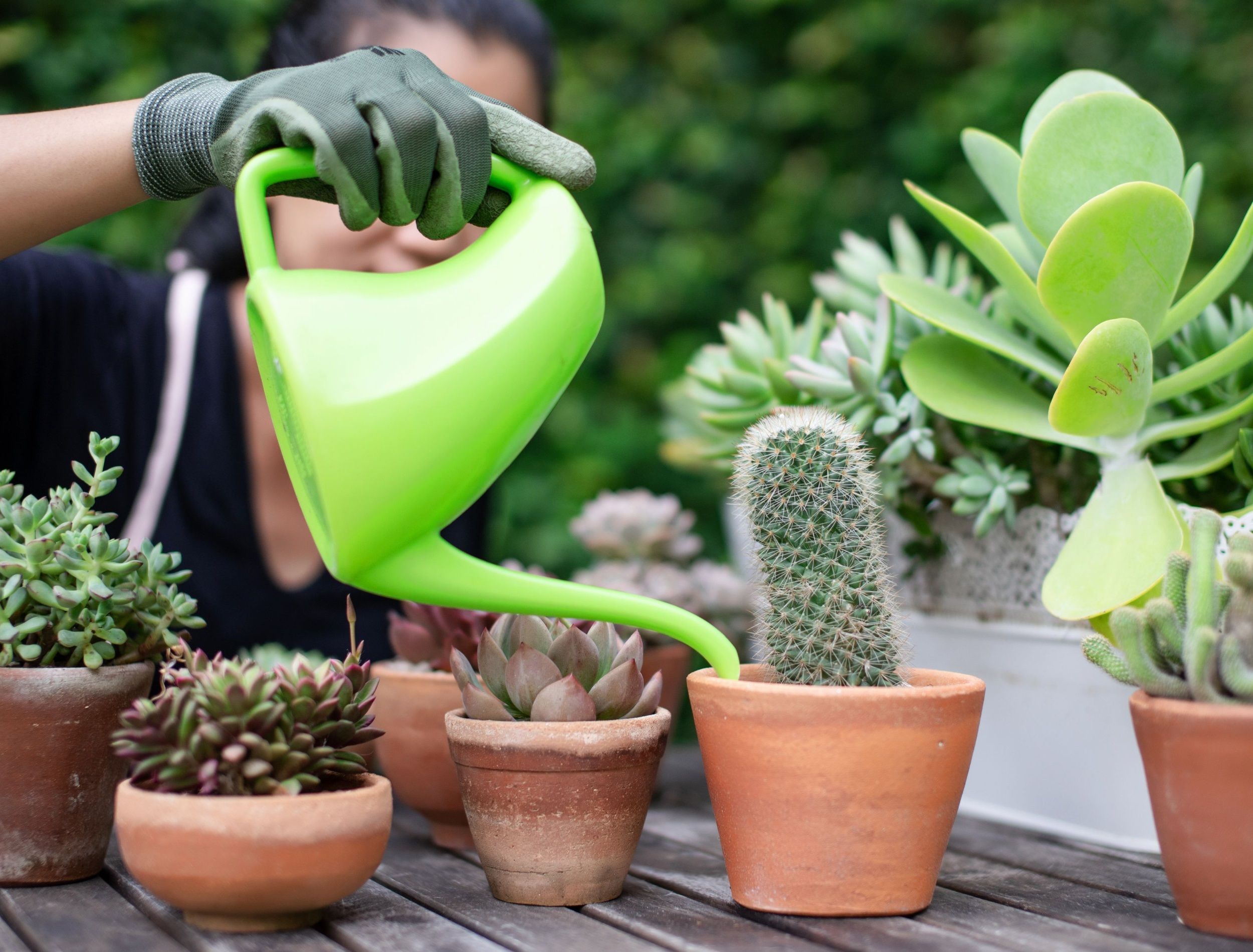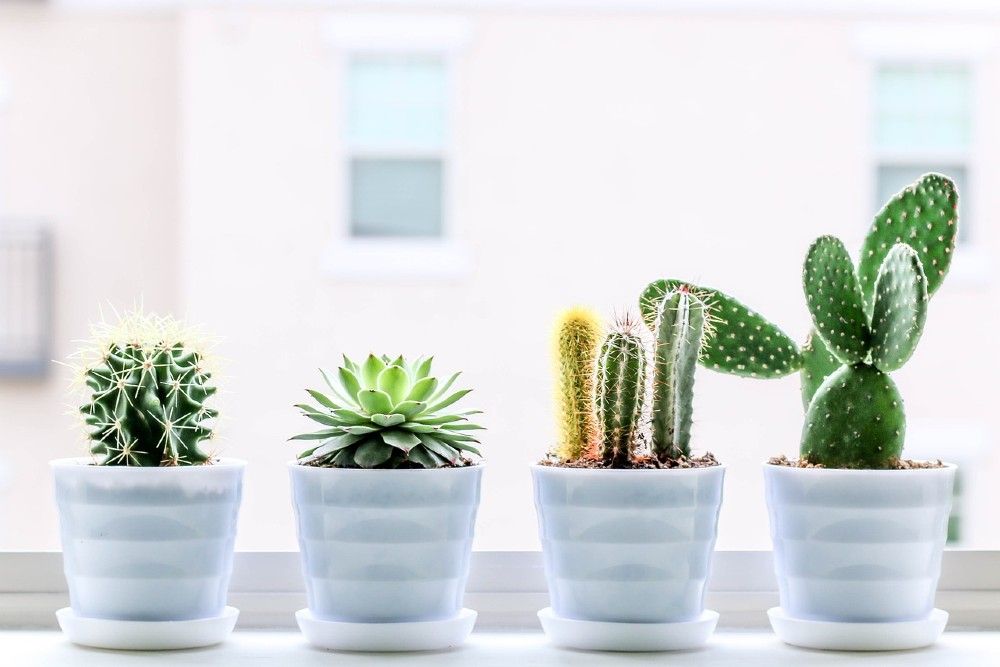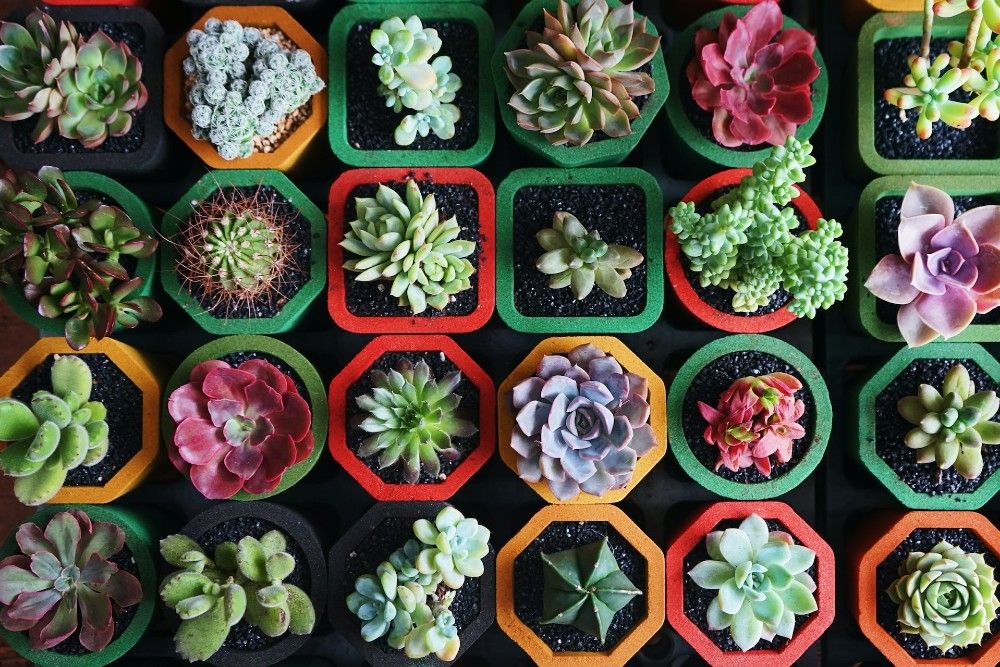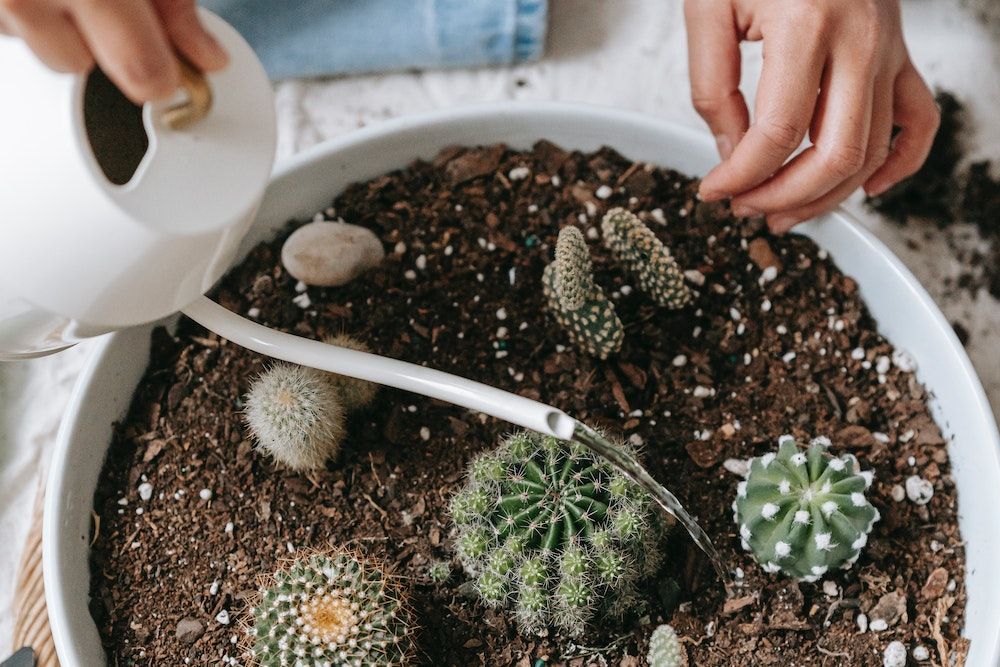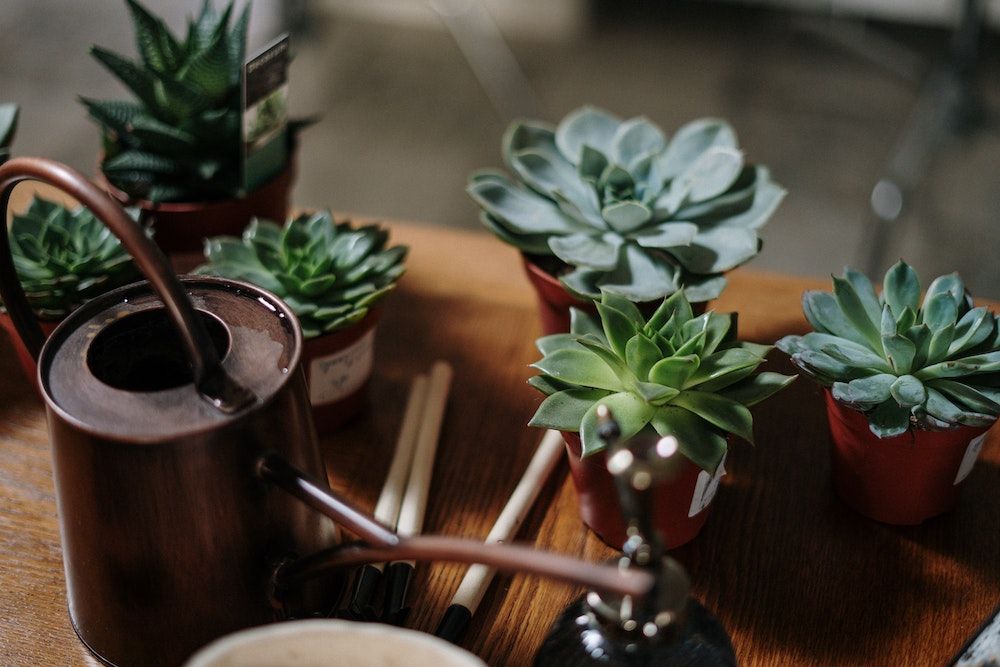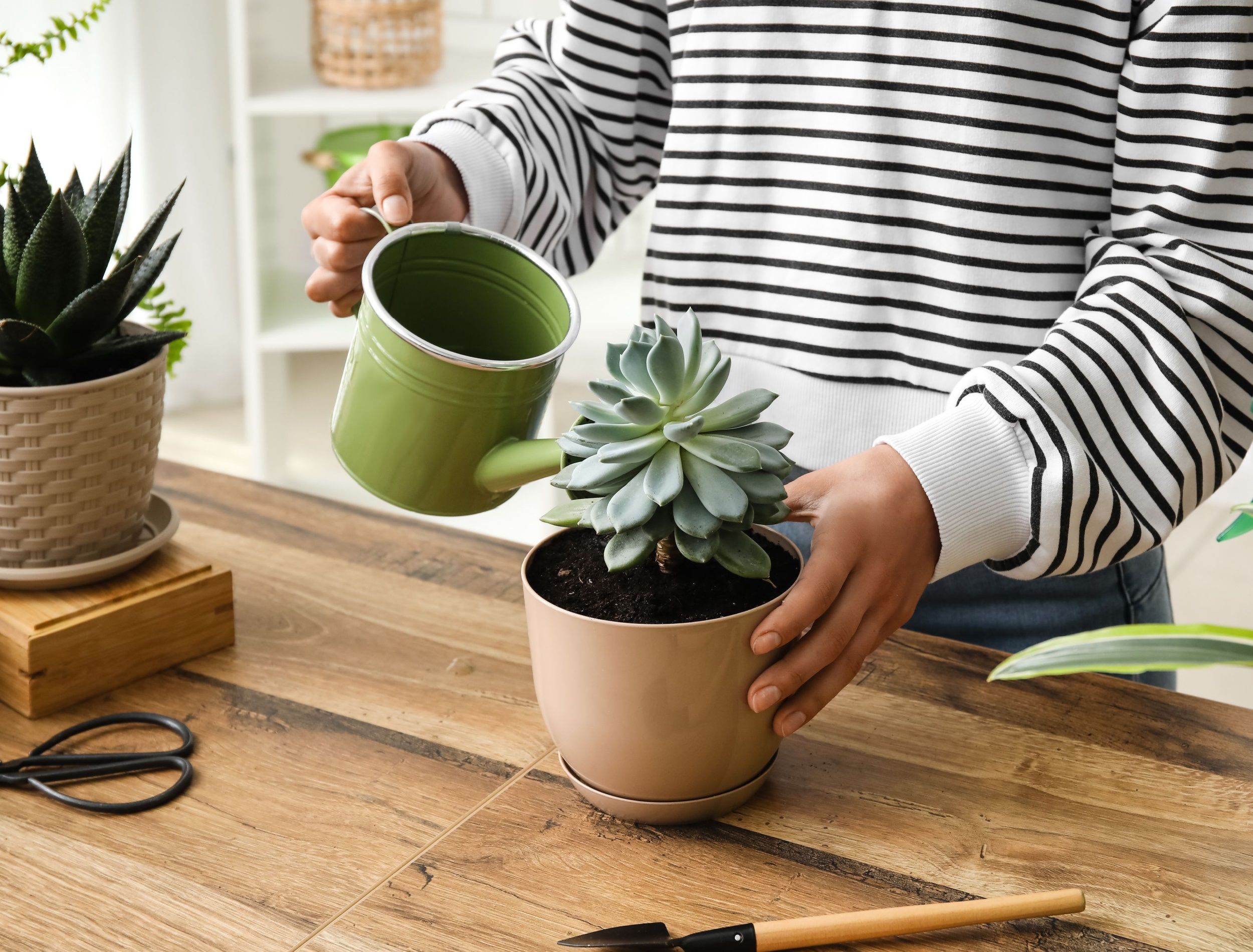Succulents are an increasingly popular houseplant, noted for their ability to thrive on neglect. Drought-tolerant, they are perfect for those away from the home for extended periods and vacations. In fact, the easiest and number one way to kill succulents is overwatering. However, like all living things, they require water to thrive. Knowing when and how to water your particular succulent is crucial for a healthy plant. Read on to learn how often you should water these unique plants.
Succulents and Cacti
Image credit: tylost via Pixabay
Succulents are a diverse category of plants with over 10,000 species! They store water in their leaves, stems, and roots which makes them adaptable to arid climates.
Cacti are a type of succulent, but most don’t have leaves, so they store water in their stem and roots. Their structure allows them to retain moisture much longer than other succulents. Since cacti are primarily native to desert climates, they are more drought-tolerant than other succulents and are particularly susceptible to rot if overwatered.
Other reputable succulents include string of pearls, aloe vera, burro's tail, and Haworthia. All these succulents have similar talents to cactus -- they store water in their fleshy leaves for later use.
When Do Succulents Need Water?
Image credit: Ian deng via Unsplash
Shriveling is a sign of dehydration and a good indication that your succulent is in need of water; Whereas plump succulent leaves are well-hydrated. When succulent leaves fall off, this is usually an indication of overwatering.
To tell if your succulent needs water, you can use the pinch test. Very gently squeeze a leaf of your succulent. If it wrinkles or is soft, then it needs water. If it is plump and firm, then it doesn’t.
Succulents prefer their soil to completely dry out between waterings. One of the easiest ways to check moisture in the soil is by using a skewer stick. This allows you to check the moisture a few inches below the surface which can be difficult in the small pots most succulents live in. Push the stick to the bottom of the soil and leave it for a few minutes. Remove it, and touch the end of the stick to feel if there is any moisture in the soil. If the bottom of the soil is dry, then it’s time to water your succulent.
Methods for Watering Succulents
Image credit: Teona Swift via Pexels
Most succulents don’t appreciate wet leaves or crowns, so it’s best to avoid getting them wet. There are two main watering methods you can use to achieve this goal; bottom watering and watering with a squeeze bottle or narrow spout.
Bottom-watering succulents is a fantastic way to avoid getting the plants wet. Simply pour water into a tray and place the pot in the tray of water. If the plant absorbs all the water, continue filling the tray until it stops drinking, or the top of the soil feels moist. Be sure to remove the tray after watering as succulents do not like soggy roots. It’s important to note that bottom watering only works for shallow pots with drainage holes. Since succulents have shallow roots, it will be harder for them to pull water up from a deep pot. This is one good reason to always use shallow pots for succulents.
In addition to bottom watering, you should alternative and also water from the top. This will flush out the extra salts in the soil which is crucial for plant health. To avoid splashing succulents with water when top watering, use a squeeze bottle, or a watering can with a narrow spout to control the flow of water. Water away from the base of the plant and wait for the water to soak into the soil before pouring out more.
How Often to Water Succulents
Image credit: cottonbro via Pexels
Since succulents encompass such a wide range of plants, watering schedules will vary by species. How often to water succulents also depends on the time of year, size of the plant, type of soil, and size of the pot. Succulents require less water when dormant in the winter months than during their growing season. In addition, plants with larger succulent leaves, such as jade plants, can store more water in their leaves and handle more infrequent watering. The type of soil used and how large the pot is will also determine how fast it takes the medium to dry out.
In the warmer months, during the growing season, check your succulents weekly to see if the soil is still moist, and only water them when dry. If you have your succulents outdoors, or in a bright window, you may have to water them twice a week during the summer months.
In the cooler months, once the plant has gone dormant, only water them often enough to prevent the plant from shriveling. This will usually be every two to three weeks.
Watering Tips
Image credits: Pixel-Shot via Shutterstock
Even though succulents are prone to overwatering, it is important that you don’t underwater them as this can cause distorted or slow growth. One way gardeners accidentally do this is by giving their succulents small sips of water. Succulents do much better when given lots of water at a time, letting it run through the soil and drain out, as long as you allow them to fully dry out between watering. The one exception to this rule is cacti during the winter; they will do better with light watering throughout their dormant period.
Watering your succulents early in the day is important to reduce the chance of rot or fungal issues. The sun will help to dry and evaporate excess water that could have a negative effect on the health of your plant.
Good soil aeration is also important for proper water drainage. Use a skewer to aerate the soil every time you water to prevent compacted soil. In addition, be sure to use well-draining succulent or cactus soil.
Succulents benefit from light fertilization every three or four waterings. Throughout the growing season use a houseplant fertilizer at one-half to one-quarter the recommended strength - succulents don’t need a lot. You can also opt for a slow-release fertilizer early in the growing season.
Cactus Makes Perfect
Succulents are easy-to-care-for houseplants that don’t require regular watering due to their ability to store water in their leaves and stems. Due to the wide variety of species, each type of succulent has slightly different levels of drought preference. So, if you plant on going anywhere, there's no need to fret about your succulents while your gone.
As a general rule of thumb, water succulents once a week during their growing period and every two to three weeks during their dormant period. Always check the soil to ensure it is dry before watering your succulent to avoid overwatering and rot issues.
Do you have any proud succulents at home and how often do you water them? Leave some tips in the comments below!

